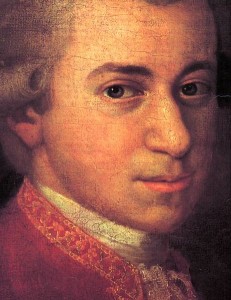Mozart, Piano Concerto No. 12, K414
 Almost a year ago we featured a performance by Buskaid, a group of young black musicians from the townships of South Africa. They have since added some new video. In a performance of Mozart’s Piano Concerto in A Major (K. 414), the collaborate with the Singaporean pianist Melvyn Tan.
Almost a year ago we featured a performance by Buskaid, a group of young black musicians from the townships of South Africa. They have since added some new video. In a performance of Mozart’s Piano Concerto in A Major (K. 414), the collaborate with the Singaporean pianist Melvyn Tan.
Tan established a specialization for playing works on the pianoforte, a precursor of the modern piano and the instrument that Mozart would have known. If you play pianoforte, you likely concentrate on music of Mozart’s time. The pianoforte (or fortepiano) lacks the power of the modern piano because it has a wooden rather than a steel frame. Its more delicate suits the grace and transparency of Mozart’s music. Although Tan plays a modern piano in this recording, he (and virtually all pianists) maintains that delicacy appropriate to Mozart. It is not the sound you would hear from that instrument if he were playing Liszt or Rachmaninov.
We should say something about the form of the classical concerto. It usually has three movements, the first being the longest and most serious. A slow movement in a related key generally follows. The last movement, often in rondo form, tends to be lighter in mood and in a quick tempo. Mozart follows this overall scheme in this concerto. The first movement of a concerto begins with a double exposition in which the orchestra alone plays the main and secondary theme, and then that material is repeated with the soloist featured.
A cadenza appears toward the end of the first movement where the soloist improvises virtuosic passages based on the themes. Often the composers wrote out the cadenzas. The cadenza is typically introduced by the same chord in the orchestra (but we will save a discussion of that technical detail for another time), and it almost always ends on a trill that leads back to the main key and a short conclusion. In this concerto, you will hear a cadenza in each of the three movements.



